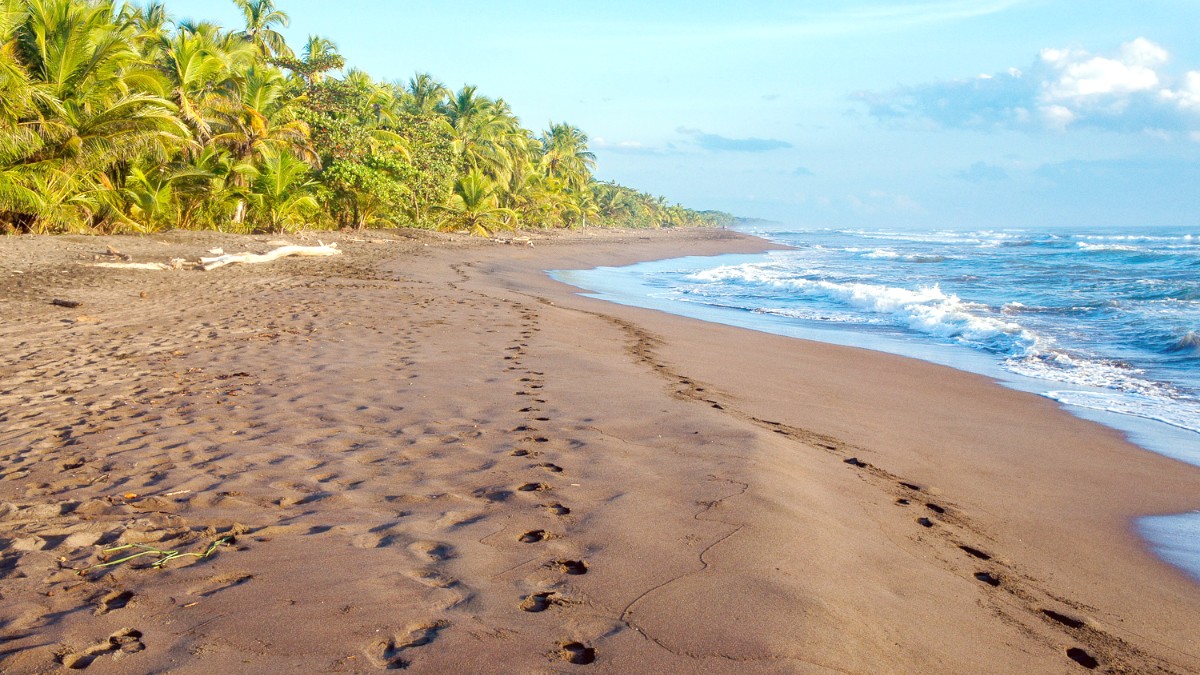
Central Pacific Coast, Costa Rica
The Dry Season (December to April) brings consistent sunshine, lower humidity, and minimal rainfall. Temperatures average 75°F (24°C) to 90°F (32°C). Ocean temperatures remain warm, around 82°F (28°C), inviting swimming and water sports. This season draws the largest crowds.
The Wet Season (May to November), known as the "Green Season," features sunny mornings followed by afternoon showers. These showers often last one to three hours. Humidity is higher. Average temperatures stay warm, similar to the dry season. September and October are historically the wettest months. The landscape turns lush and green, with rivers swelling.
The High Season (December to April, especially late December to early January, Easter week) sees optimal weather with abundant sunshine and calm seas. Beach activities and exploration are prime. All tours and services operate at full capacity. However, expect higher prices for accommodations and activities. Larger crowds mean advance booking.
The Shoulder Season (May to July, November) presents transitioning weather with a mix of sun and rain. Landscapes appear lush green. Fewer tourists than high season appear. Lower prices for some services exist. This period forms a balance for various activities. Low Season (August to October) brings the lowest prices for lodging and tours. Fewest crowds. Surfing conditions can offer excellent, larger swells. Expect the highest rainfall, with potential for disrupted plans due to heavy downpours. Some smaller tours or businesses might operate on reduced schedules.
Dec-Apr
Optimal weather, calm seas, all services operating fully.
Higher prices, larger crowds, advance booking needed.
May-Jul, Nov
Mix of sun/rain, lush green, fewer tourists, some lower prices.
Increased afternoon rain, plan morning activities.
Aug-Oct
Lowest prices, fewest crowds, serene experience, good surf swells.
Highest rainfall, potential disrupted plans, reduced schedules.
Costa Rica lies outside the main hurricane belt. However, indirect effects like increased rainfall and strong winds from Caribbean storms can occur, mainly on the Caribbean coast. The Pacific coast, including Jacó, experiences less direct hurricane impacts. Heavy rainfall in the wet season can cause localized flooding and temporary road closures, especially on unpaved roads. Always check local weather forecasts.
Surfing: Waves remain consistent year-round. Larger swells usually occur during the wet season (May-November), especially for experienced surfers at Playa Hermosa. Beginner waves are consistent at Jacó Beach. Wildlife Viewing (Carara National Park): Good year-round. Spotting animals often occurs with greater ease during the dry season as they gather near water sources. Birdwatching is excellent during migration periods, typically late wet season or early dry season. White Water Rafting: Rivers feature higher water levels during the wet season, making it the top time for rafting adventures. Sport Fishing: Fishing is good year-round, with different species peaking in various months. Generally, the dry season presents excellent conditions for offshore species like marlin and sailfish.
Year-round, larger swells May-Nov for experienced surfers.
Year-round, easier in dry season near water sources.
Wet season (higher water levels) is prime.
Year-round, dry season excels for offshore species.
Excellent during migration (late wet/early dry season).
Prepare documents before traveling to Costa Rica for a smooth entry. Most tourists find the requirements straightforward.
Travelers from the United States, Canada, European Union, United Kingdom, Australia, and many other countries do not require a visa for stays up to 90 days. A valid passport and a return or onward ticket suffice. For a comprehensive list of countries and specific visa requirements, consult the official website of the Embassy of Costa Rica in your country of residence or the Costa Rican Directorate General of Migration and Foreigners. Visa requirements change, so check before your trip.
Costa Rica levies no entry fee for tourists. Upon arrival at Juan Santamarían International Airport (SJO) or other ports of entry, proceed to immigration control. Present your passport and return or onward ticket. An immigration officer stamps your passport with the authorized length of stay. Observe the date stamped in your passport; this marks your legal period of stay.
Plan your budget for your Jacó trip with this guide to currency, exchange rates, and typical costs for various travel styles.
Prioritize your health and safety when traveling to Jacó. This section details recommendations for vaccinations, common health concerns, access to medical services, and important safety tips.
No specific vaccinations are required for entry to Costa Rica for most travelers. Consult a healthcare professional for recommended routine vaccinations, Hepatitis A/B, Typhoid, and Rabies.
Dengue, Zika, and Chikungunya exist. Combat these with Insect repellent with DEET or picaridin. Wear long sleeves and pants, particularly at dawn and dusk.
High temperatures and strong sun. Apply Reef-safe sunscreen with SPF 30+, wear hats, seek shade, and stay hydrated.
Jacó has private clinics like Clinica Jacó and Medical Tourism Costa Rica Jacó. Dial 911 for all emergencies (police, ambulance, fire).
Pharmacies are widely available for over-the-counter and some prescription medications. For serious emergencies, patients might transfer to larger hospitals in nearby cities like Puntarenas or San José.
Tap water in Jacó and most developed areas of Costa Rica is generally considered safe to drink. However, Bottled water is widely available and often preferred by tourists. Consider a Filtered water bottle for convenience and sustainability. Choose establishments that appear clean and busy for food.
Always consult your healthcare provider before any international travel.
Avoid leaving valuables unattended on the beach or in plain sight in vehicles. Be cautious of openly displaying large amounts of cash or expensive jewelry.
Be aware of your surroundings, especially at night in less-populated areas or near bars and clubs. Do not walk alone late at night in poorly lit areas.
Be cautious of unsolicited offers for tours, drugs, or services. Trust your instincts.
Jacó experiences a higher incidence of petty crime, like theft and pickpocketing, compared to some other tourist destinations in Costa Rica. This often relates to its nightlife and beach environment.
Keep these numbers readily available.
Dial 911 (Police, Fire, Ambulance)
(Fuerza Pública Turística): (506) 2643-3459 (Jacó station)
Keep contact details for your country's embassy or consulate in San José.